Link
“As Nicholas Dagen Bloom, a professor of urban policy and planning at Hunter College, describes in his new book, The Great American Transit Disaster, US public transportation has lurched from one crisis to the next throughout the past century.
“Americans ignored transit problems and created cities favorable to cars thanks to public policy choices rather than inevitability or secret conspiracies. The same mobility, planning, and social decisions are before Americans today as they face the challenges of meeting equity goals and a global climate crisis.”

“- In the book you wrote, “It's uncomfortable to admit it, but American political representatives have kneecapped mass transit.” So transit’s decline was not inevitable?
Correct. You didn’t have to build systems of parkways and highways that were so comprehensive that you sacrifice neighborhoods. You didn’t have to completely demolish your downtowns, create massive federal programs that paid for parking ramps and give tax breaks on downtown parking. These are political choices.
- In city after city, you tell a similar story about a decline in transit revenues leading to higher fares and poor service, which leads more people to leave, forcing still higher fares and worse service. Why was it so hard for the agencies to pull out of these downward spirals?
Remember that in the 1930s transit was still run by private companies, with a few exceptions like Boston, San Francisco and New York. So there was a hope even within the private companies that service could somehow reach a sustainable level.
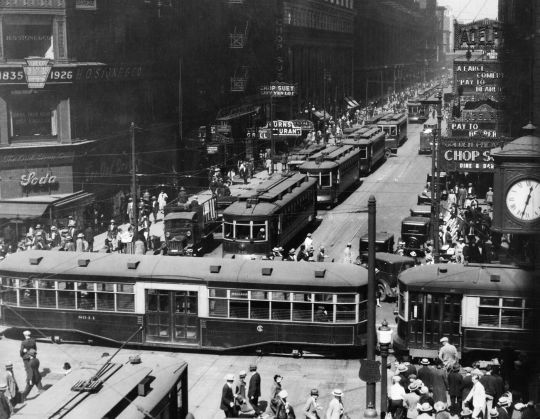
“- What was the appeal of diesel buses compared to streetcars?
There were a few things going on. First, buses were a very advanced technology for their time. They have rubber wheels, they’re not dependent on the electrical wires and they provide a kind of flexibility of routing. They can theoretically run very fast, and they can run new routes, serving areas of lower density.
- Do they require less staffing too?
Yeah, absolutely. Transit went from two-man streetcars to one bus driver collecting fares. They also didn’t have to continue maintaining the streets after they shifted from streetcars to buses. There were all these talking points for the bus industry, and they were also used by public transit.
But I will say this: On the public policy side, a lot of the impetus was driven by the goal of getting the streetcars off the streets.
- Because they got in the way of car drivers?
Exactly. They were definitely seen as being in the way of cars and slowing down traffic.

“- In your acknowledgments, you wrote, “Let us all make sure transit agencies get the operating and capital funds that they need to thrive in the coming years.” Based on your read of history, do you have any suggestions for how agencies should go about securing that money?
I think always the compelling case for greater ridership is the aggravation of driving. (The aggravation factor must be very high for drivers to force them onto transit. Boston and San Francisco did that more than most places. ) For that reason, the most positive things might be rezonings, the multifamily boom, and the end of parking minimums. If we remove highways in certain areas, there’s an opportunity for transit to be competitive. But barring that, it’s very hard to know what an agency on its own can do because they’re now in survival mode.
At the end of the day, someone’s got to fund transit. Otherwise we can end up with almost nothing.”
read more: bloomberg, 27.04.23.
11 notes
·
View notes
Photo
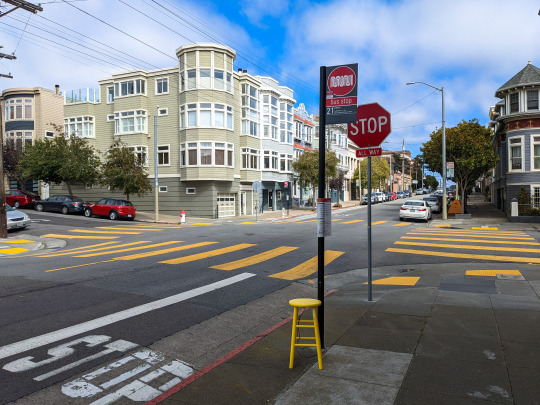
DIY bus stop seating, san francisco.
help a neighbor out! when the city can’t provide...
26 notes
·
View notes
Photo
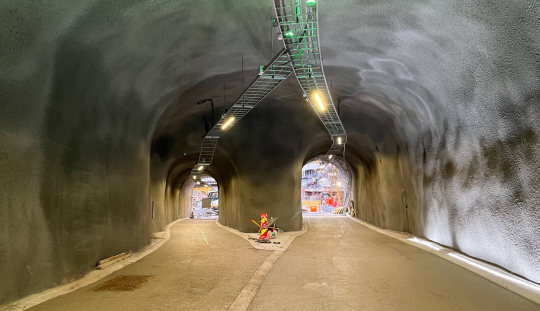
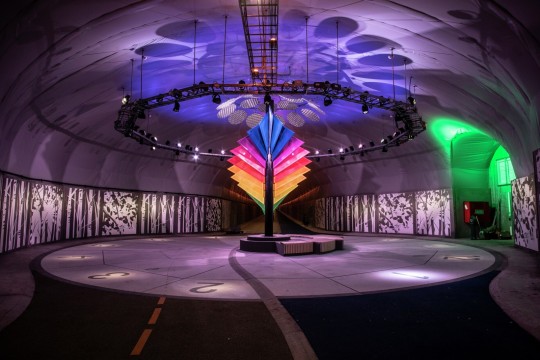
the fyllingsdalen tunnel, the longest purpose-built bike & walk tunnel in the world, opens on 15 april 2023.
2.9 km long, the tunnel runs through the lovstakken mountain and connects the residential neighborhood of fyllingsdalen to the bergen city center.
8 notes
·
View notes
Photo
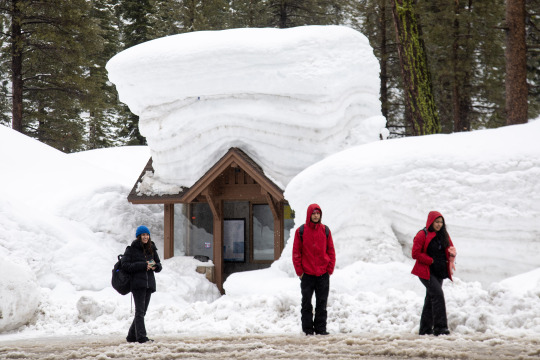
a bus stop in alpine meadows in the lake tahoe region, california, during record snowpack. 10.03.2023.
4 notes
·
View notes
Link
“Traffic stops are by far the most common reason that police officers initiate contact with members of the public; they account for 84% of encounters, according to data from the Bureau of Justice Statistics. In fact, before cars, ordinary citizens rarely came in contact with law enforcement. As we rebuilt cities around the automobile, historians contend, drivers came to expect to be policed. And communities of color have paid the highest price.
In Berkeley, Black drivers are six times as likely to be stopped as white drivers, and four times as likely to be searched. Stops for minor infractions––a broken taillight, speeding––are also more likely to turn deadly for Black and brown drivers, as the deaths of Philando Castile, Sandra Bland, and Daunte Wright illustrated.
All this enforcement isn’t making our streets safe: Despite growing police budgets, the United States has the highest number of traffic deaths per capita of all developed nations.
Darrell Owens––along with a coalition of racial-justice advocates, anti-car activists, and traffic-court public defenders––wants to change that. Designing better streets, they say, won’t just prevent traffic accidents. It will reduce the need for police enforcement, and its potential for violence, altogether.
Just a few weeks earlier, Owens had watched George Floyd being murdered in an intersection and had joined in the protests. The Berkeley City Council had since promised police reform. But Owens, who, at 6 foot 6, is known by one city-council member as the “youngest, tallest, and only Black” regular attendee of transportation-commission meetings, had been stewing on a more specific idea. His Twitter thread laid out his argument for transforming law enforcement by transforming city streets: “I prefer license plate cameras … and mailed tickets over: ‘ok make sure nobody does anything that justifies this cop pumping 4 rounds of lead into me.’”
To his surprise, the City responded. A councilmember retweeted his thread. A month later, the City Council passed “BerkDOT,” a first-in-the-nation measure to shift traffic enforcement to unarmed Department of Transportation workers.
In the summer of 2020, cities across America made similar commitments: to curtail the use of force, shrink police budgets, and fund fleets of civilian officers. But Berkeley was the first to target the traffic cop. By doing so, it is rethinking police power at its root.
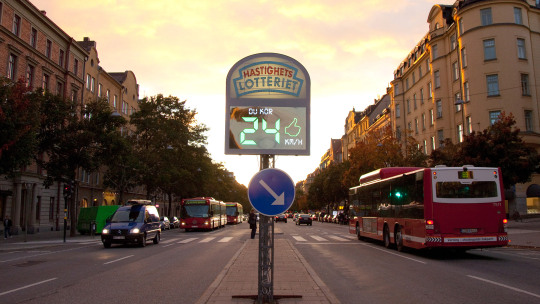
a speed feedback sign in stockholm that enters complaint drivers into a lottery.
“In 1925’s Carroll v. United States, the Supreme Court ruled that the police could search automobiles—unlike homes and offices––without a warrant. This Prohibition-era “vehicle exception,” passed to counter an uptick in alcohol smuggling, gouged a hole in citizens’ Fourth Amendment rights. Suddenly, law enforcement had unprecedented entry into our private lives––all an officer needed was a missing license plate or a broken taillight.
Thus was born the pretextual stop.
Police enforce the law. But they can’t fix the street-level issues that cause people to break it. In 2020, the San Francisco Municipal Transportation Agency examined the effects of speeding enforcement on driver behavior and found that once a visible officer leaves the scene, speeding violations recommence.
Narrow the road, protect bike lanes, and add medians, and drivers will slow down.”
read more: theatlantic, 15.10.21.
51 notes
·
View notes
Photo
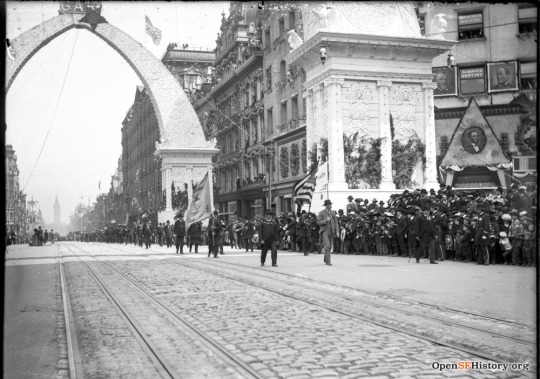
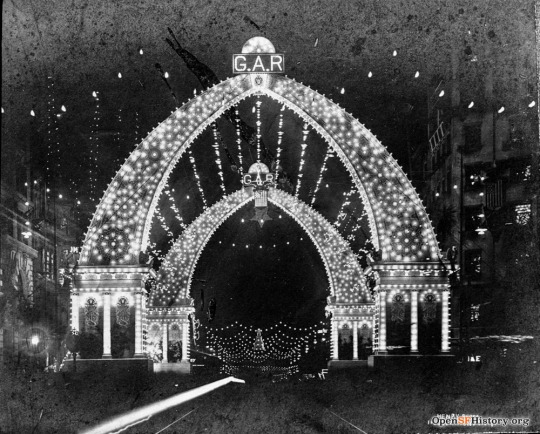
market/third street, san francisco. grand army of the republic parade, aug 1903.
opensfhistory via brokeassstuart, 22.10.19.
1 note
·
View note
Link
“A few days ago, a story was circulating about how the infrastructure bill, which was recently passed by the House of Representatives, included funding for research on beacons to be worn by cyclists and pedestrians to make them legible to autonomous vehicles. A story in Forbes noted that the bill “formalizes the acceptance of so-called ‘vehicle to everything’ (V2X) technology that, on the face of it, promises enhanced safety on the roads for pedestrians and cyclists.”
I know a Mexican village through which not more than a dozen cars drive each day. A Mexican was playing dominoes on the new hard-surface road in front of his house—where he had probably played and sat since his youth. A car sped through and killed him. The tourist who reported the event to me was deeply upset, and yet he said: “The man had it coming to him.”
The assumption in the tourist’s statement is clear and brutal: it is the responsibility of humans to adapt to their technical milieu. For the sake of a development he likely neither needed or desired, this man’s environment was transformed so as to render it hostile to him, but it is somehow his fault for failing to promptly adapt himself to the new reality. As Illich notes, there’s not even an air of the tragic in the tourist’s claim. One can imagine some not-too-distant future when a cyclist is struck and killed by an autonomous vehicle and an observer declares, “Well, she wasn’t even wearing her beacon, so she had it coming to her.”
As I thought about Illich’s anecdote, my own parental anxiety to convey to my children the importance of minding the cars around them at all times appeared in a new light. When one remembers that it has not always been necessary to carefully train a child, with ritualistic precision, just so that they can walk about without fear of mortal injury, then the whole thing takes on a rather absurd and malicious character.

Once you see this dynamic in one set of circumstances, you start to see it again and again. In innumerable ways we bend ourselves to fit the pattern of a techno-economic order that exists for its own sake and not for ours.”
read more: theconvivialsociety, 21.11.21.
47 notes
·
View notes
Photo
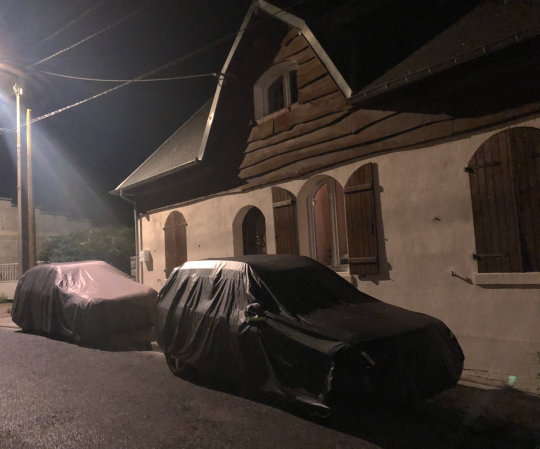

private use of public space.
“If your car was a tent, you would be criticized for taking up too much space and even occupying public space illegally. This shows that car parking hides an injustice—why not put trees, benches, a wide sidewalk there?“
—lcyclable
378 notes
·
View notes
Link
Where do you think we are right now with bike infrastructure? What might it take to get to that tipping point?
“Part of it’s design, and part of it’s culture. On the design side, it really depends on what community you’re in. Some cities and towns have done a great job. Some are really leaning into this, but it’s going to take a while to get everything connected. If I’m not mistaken, D.C., for example, just completed 100 miles of bike lanes, and they’re going to keep expanding it. Of course, it’s not just about how many miles you have, it’s about how they all link with each other.
The culture side, I think, is making clear that this is something that with the right design, and the right conditions, anybody can do. We learned a saying on that trip that there’s no such thing as bad weather, only bad clothing. And I think often Americans would say, Okay, you’re in a temperate climate, let’s say California, of course you’d bike to work, but not in a northern city. But if you can do it in Scandinavian winters, then you can do it anywhere. It’s just a matter of being prepared. And sometimes also in hot climates—you know, making sure employers are supportive [with] a place to change or shower for people who decide to bike to work.”
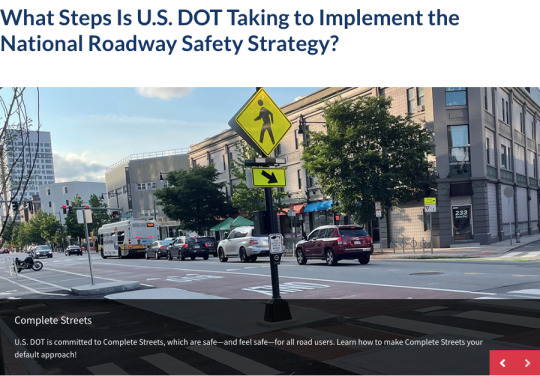
If you think about an ideal future scenario, what do you think would be the role for cars in cities?
“Cars are always going to be an important part of cities. But an ideal future is one where cars are serving people in cities rather than the other way around. It’s making sure that every mode of transportation revolves around human beings versus making everything revolve around cars. And that’s not really as much about cars as it is about roads and economics and all those things that push people into cars. You shouldn’t have to have a ton of metal with you everywhere you go, but in too many places, we don’t give people much of an alternative. And so I think a better future isn’t about a war against cars or being car-free. It’s about making sure that we do the thing that makes the most sense, and in a lot of dense urban areas, or in a lot of high traffic, commuting routes, or in a lot of areas, it just makes more sense to have other means of transportation.
There are places where if you were starting from scratch, cars wouldn’t make sense. But we push people into that. The future should be about good choices. And I think given the good choice, many people will choose something that is safer and more environmentally responsible than to be able to drive.”
read more: fastco, 10.11.22.
12 notes
·
View notes
Photo

merry christmas! wishing you warmth and cheer. and a cable car ride!
photo by val lupiz.
1 note
·
View note
Link
“Mikhail Sapon, the 30-year-old chief municipal architect of Irpin, is in charge of overseeing the reconstruction of not only the Irpin bridge but the entire city.
The Russian invasion obliterated much of Irpin’s civilian infrastructure: Attacks blew out thousands of residential windows, collapsed roofs, eviscerated heating systems and destroyed the water filtration system. The Central House of Culture, the public market, the hospitals and the stadium were shelled. All of them would somehow need to be restored. “During this month, we started counting all the damage, scanning everything with drones,” Sapon told me. “We realized that 70 percent was destroyed, that the bridges were gone, all the kindergartens are damaged.” He is working with Irpin’s mayor, Oleksandr Markushin, and the executive director of the Irpin Reconstruction Fund (and a former mayor), Volodymyr Karpluk, to restore the city even as rolling blackouts and energy cuts remind residents that more pain is still to come.
Because Irpin was one of the first Ukrainian cities to be destroyed and liberated, it is also one of the first places to make a full accounting of its losses and begin making plans for the future. The reconstruction of Irpin may one day serve as a template—or a cautionary tale—for the eventual rebuilding of larger cities like Kharkiv, Kherson and Mariupol. The city has become something of a laboratory for working through the array of concerns confronting Ukraine as it rebuilds.
Iryna Yarmolenko, an Irpin resident and Bucha City Council member who evacuated abroad with her son, first to Poland and then to France, watched the devastation from afar. In consultation with Sapon and Markushin, she put together an open call for Ukrainian architects, designers and urban planners to come to Irpin and develop proposals for how the city should rebuild. By July, submissions were already flowing in, and Yarmolenko had extended the call to foreign architects. Some plans reimagined Irpin’s architectural landmarks as gleaming modernist complexes, with monumental glass additions supporting whatever facades could still be saved. They were expensive, ambitious designs, experiments in conceiving of a future still to come, a future radically unlike the past.
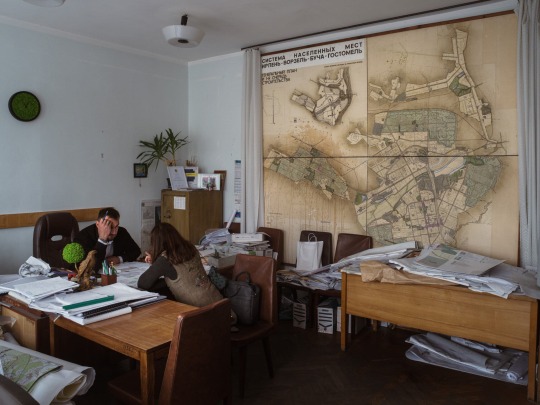
“But as Iryna Matsevko, a historian and deputy vice chancellor at the Kharkiv School of Architecture, explained to me, the rebuilding of Ukrainian cities has become an industry unto itself, attracting high-profile architects from all over the world. The attention is a blessing and a curse: It can bring investment and international airtime, but it also risks diminishing the role Ukrainians play in the reconstruction. In Irpin, Sapon and Yarmolenko are trying to ensure that their city reaps the benefits of international attention without getting lost in a swirl of good will.
For now, though, the reconstruction plan is happening in piecemeal fashion. Volunteers have identified the sites most in need of repair, including the House of Culture, the public library, the local museum and the old market, as well as various private homes and larger apartment blocks. Each project has been given a preliminary price tag; an English-language brochure outlines the damage to each for the benefit of potential funders. You can scroll through Irpin’s decimated infrastructure in the same way that you might flip through a catalog. This is a strategic choice and a revealing one: The team understands all too well that they cannot count on international good will alone to survive. To receive the funds they need, they need to market their own averted obliteration.

irpin’s market square, which the city plans on transforming into a space called freedom square.
“Anna Kochuch, another designer on the project, told me that as far as she sees it, monuments are a Soviet concept, and erecting one in the new Freedom Square would risk undermining the organizing premise of the space. “Freedom is about normal life, normal work,” her colleague Serhii Rusanov explained. “Irpin is the first place to think about how to reorganize the city, how to make it more comfortable, how to make people’s lives better.””
read more: nytimes, 07.11.22.
3 notes
·
View notes
Photo

oakland, ca. 1970s. by raymond cooper.
via sfgate/eastbayyesterday, 09.10.22
7 notes
·
View notes
Photo
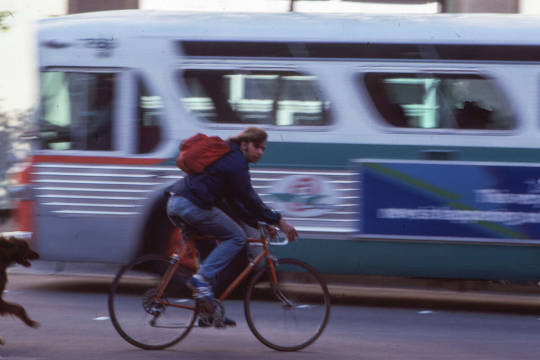
oakland, ca. 1970s. by raymond cooper.
via sfgate/eastbayyesterday, 09.10.22
7 notes
·
View notes
Photo

australian tourists diana sotts and ned trippe at ocean beach san francisco, 1982. photo by gary fong, sf chronicle.
via san francisco’s ocean beach history: the 1960s to 1980s. thethirdself, 31.01.2021.
2 notes
·
View notes
Link
“In nearly every major US city, apartments are banned in at least 70% of residential areas. San Jose prohibits apartments in 94% of its residential areas. The most a developer can build in these zones is a detached single-family home.
Beyond apartment bans, a host of other zoning regulations limit housing supply. Rules such as height limits, minimum setbacks, and floor-area ratios curtail the development potential of most residential areas. In San Luis Obispo, the “High-Density Residential” zone—the most liberal residential district in the city—limits buildings to a 35-foot height and mandates large lawns. Where apartments can be built at all, these specifications mean the complexes won’t host many units.
Apartments aren’t the only type of housing snarled by zoning. In cities, many zoning codes ban single-room occupancies (SROs)—better known as boarding or rooming houses—in which residents rent a furnished private bedroom with a shared kitchen and bathroom. Where they’re allowed, SROs serve as a housing safety net, providing exceptionally affordable accommodations to low-income singles. In the postwar period, however, many cities—including New York—modified their zoning to ban them.
For every zoning rule prohibiting new housing, a half-dozen rules inflate the prices of the housing that actually gets built.
Consider minimum lot sizes, which require developers to set aside a certain amount of land for each home. These rules are common in single-family zoning districts, where lot size is a key driver of costs. Although they serve a health-and-safety function in rural areas—where, for example, sewer hookups may be unavailable—these rules serve no such purpose in most cities and suburbs. Ample research has shown that minimum lot sizes are a major culprit for rising housing costs.

“Minimum parking requirements do similar damage in cities. These mandate that for each new unit of housing, a developer must also build some number of off-street parking spaces. While developers have both the incentive and local knowledge to determine how much parking a project requires—too few spaces and the units won’t sell; too many spaces and the developers waste money—minimum parking requirements supersede their judgment with often-arbitrary standards.

“The most powerful voices in local housing debates are those of incumbent homeowners. If they see zoning regulations as a means to inflate their biggest investment—the value of their home—the prospects for reform are slim. Even when local policy makers manage to change codes, they will face continual opposition. Their victories are unlikely to last.”
read more: atlantic, 21.06.2022.
arbitrary lines, by m nolan gray.
22 notes
·
View notes
Photo
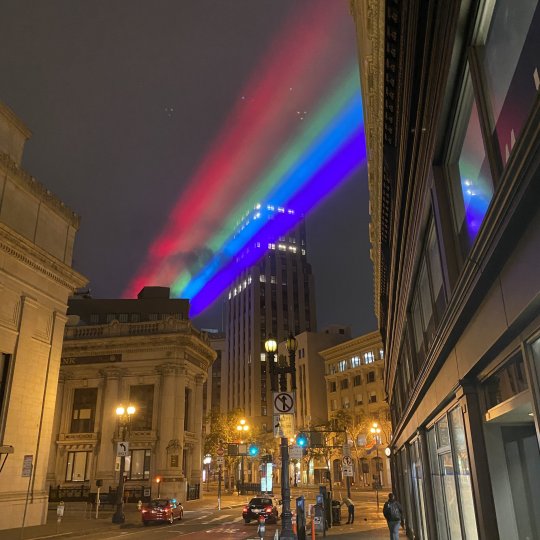
welcome san francisco. by karl the fog and illuminated arts. pride weekend, 2022.
8 notes
·
View notes
Photo

sfmta/muni: we put the Trans in Transportation.
24 notes
·
View notes